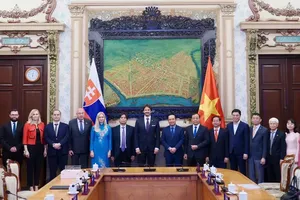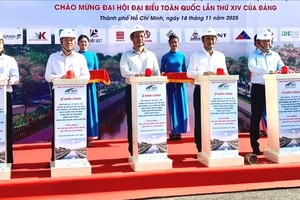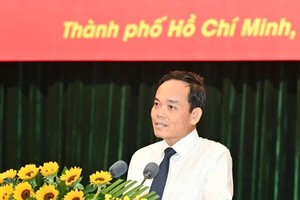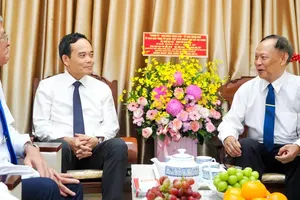Vietnam IFC is planned under a “one center, two destinations” model, located in two centrally-run cities, Ho Chi Minh City and Da Nang.
Proactive promotion
At the Government’s regular working session in October, on November 8, Ho Chi Minh City People’s Committee Chairman Nguyen Van Duoc stated that the city has largely finalized its organizational and staffing arrangements, making it ready to put HCMC IFC into operation.
According to the plan, the center will begin operations in 2025 and will be completed within five years.
The center will be located in Saigon Ward, Ben Thanh Ward and the Thu Thiem Urban Area in An Khanh Ward, covering a total area of 898 hectares. The preliminary total investment for the project is estimated at around VND172,000 billion, equivalent to US$7 billion.
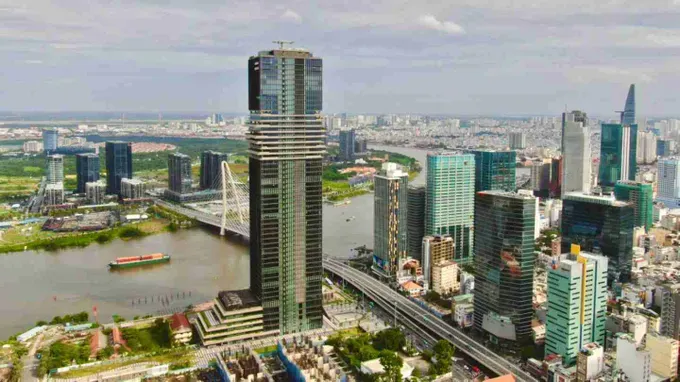
Regarding preparations, the Ho Chi Minh City Department of Finance reported that the city has invested a high-speed internet network covering the entire IFC venue. The municipal Department of Science and Technology is building an online information portal for HCMC IFC.
As for human resources, the city has sent staff to join delegations of central and local agencies to learn from international experiences and attend IFC operational training programs.
In terms of operational mechanisms, the city has submitted detailed comments on eight draft government decrees and is continuing to collaborate closely with ministries and agencies to finalize the decrees for establishing the IFC, following the Government’s directives.
Assoc. Prof. Dr. Nguyen Huu Huan, a member of the consulting team for establishing HCMC IFC, added that the city has also worked with leading global and Vietnamese technology corporations to prepare infrastructure for the IFC.
Previously, the Ho Chi Minh City Department of Finance signed a memorandum of understanding with the U.S. Nasdaq Stock Exchange to promote cooperation in developing the IFC in HCMC.
Meanwhile, the University of Economics Ho Chi Minh City (UEH) signed a memorandum with the New York Institute of Finance to implement practical financial and investment training programs following international standards, aiming to build a team of high-quality experts, advisors and financial operators to serve HCMC IFC directly.
Numerous competitive advantages
From a business perspective, CEO and founding shareholder of VinaCapital Don Lam noted that numerous foreign investors are particularly interested in the plan of building the IFC in the city. Besides, enterprises are closely monitoring the progress and are ready to participate as soon as the operational mechanisms, legal frameworks, and the timeline are clearly defined.
Regarding Vietnam IFC’s competitive advantages compared to other regional IFCs, tax incentives stand out. According to Resolution No. 222/2025/QH15 of the National Assembly, several priority sectors operating within IFCs enjoy a preferential corporate income tax rate of ten percent for 30 years, with a maximum corporate tax exemption of four years and a 50 percent reduction on payable tax in the following nine years.
Experts and highly skilled professionals, including both Vietnamese and foreign nationals, are exempt from personal income tax on salaries and wages earned from work performed at the IFCs until the end of 2030.
Vietnam’s cost structure is also highly competitive compared to other regional IFCs, with reasonably priced financial services, and significantly lower office rental and labor costs in Ho Chi Minh City and Da Nang City compared to Singapore and Hong Kong. It is estimated that labor costs in HCMC are only about one-fifth of those in Singapore.
In addition to this advantage, Assoc. Prof. Dr. Nguyen Huu Huan emphasized that HCMC IFC should position itself as a financial technology hub, where technology and finance converge, hosting world-class trading platforms.
Chief Marketing and Distribution Director of Dragon Capital Will Ross stated that Vietnam is at a favorable point for developing IFC thanks to its stable economic growth and an increasingly mature capital market. The expert noted that global capital is driven not only by profit but also by market reliability.
Domestic companies, especially in the tech sector, are also eager to participate early in HCMC IFC under flexible mechanisms.

Chief Operating Officer of AlphaTrue Solutions Le Anh Quoc expressed his hope that Vietnamese businesses would be allowed to join the IFC value chains from the initial stage.
Domestic fintech platforms like Basal Pay could serve as a bridge between traditional financial systems and the digital asset market, enhancing connectivity and efficiency of domestic capital flows.
The Ministry of Finance is currently studying four potential models for executive and supervisory agencies at the two IFCs in Ho Chi Minh City and Da Nang City.
The initial plan is to establish two executive agencies and two supervisory agencies under the People’s Committees of Ho Chi Minh City and Da Nang City.
The second plan is to establish one executive agency and one supervisory agency under the Government, concentrating authority at a single central office to ensure consistency, transparency, and professionalism.
The third plan is to form two executive agencies and two supervisory agencies under local authorities, coordinated by the National Steering Committee for the period of 2025–2030, to step by step improve institutions, human resources, and perform trial operational mechanisms.
After 2030, once the IFC is operating stably, it will be gradually switched to the second plan. This transition would be codified in the Vietnam International Financial Center Law, merging the two local executive agencies into representative offices under the National Financial Center Authority.
The fourth plan is to establish two executive agencies under local authorities and one supervisory agency under the Central government.
All of four plans are currently being reviewed with opinions from experts, global financial institutions, and businesses to select the optimal structure, ensuring transparency, efficiency, and legal compliance.
According to Standing Deputy Chairman of the People’s Committee of Da Nang City Ho Ky Minh, the IFC in Da Nang City will develop around three main pillars, including green finance, trade finance, financial technology, and digital assets.
Da Nang City aims to become an initial venue of a pilot program for new financial models, including digital assets, cryptocurrencies, digital payments, and blockchain, AI applications, along with strong fund management activities to support fin-tech startups.
Besides, Da Nang City will also focus on cross-border trade finance linked to seaports, logistics, and international tourism, alongside offshore financial services for foreign investors and global investors.
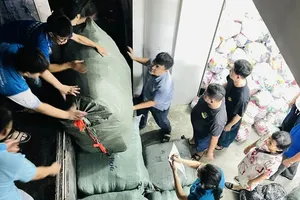
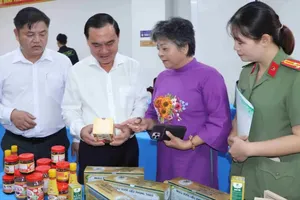
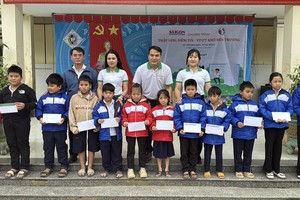


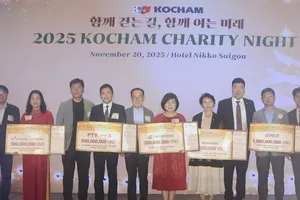
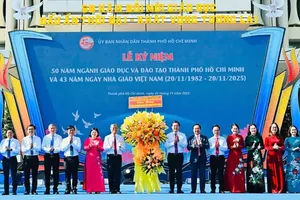
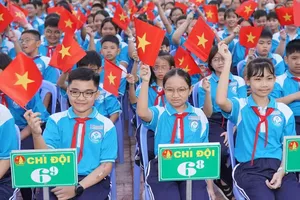
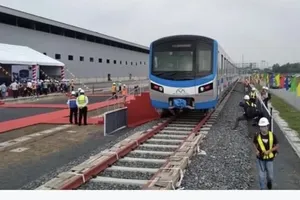
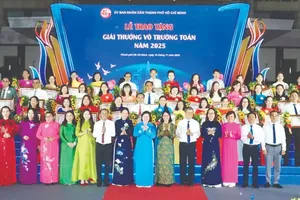

)
